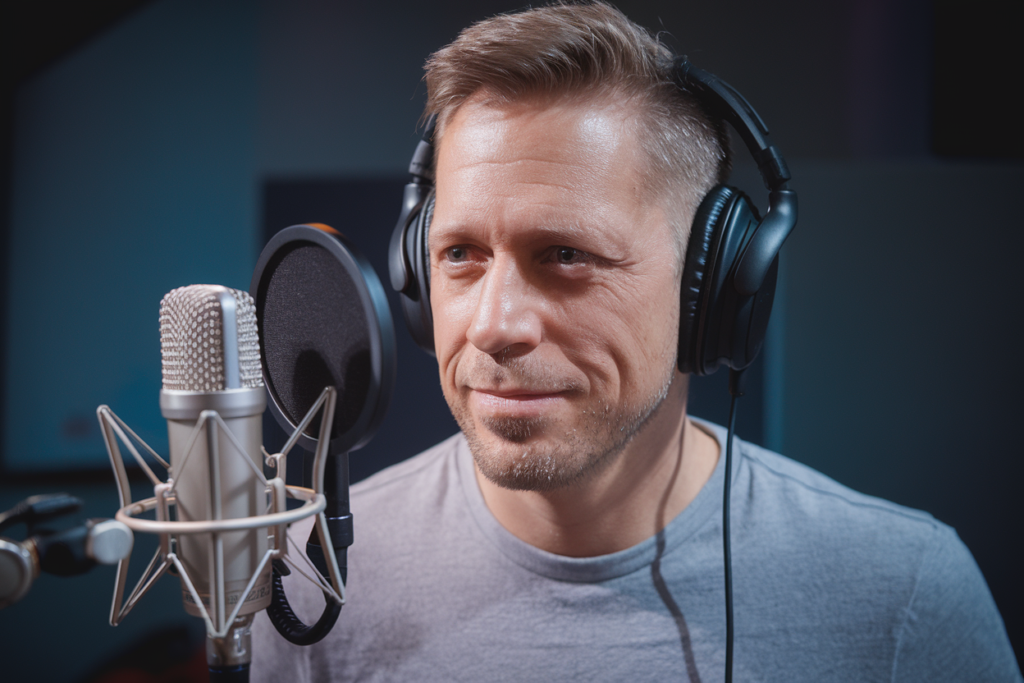Key Takeaways
- Diverse Dialects Enhance Voiceovers: Understanding various German dialects can significantly improve the authenticity and emotional impact of your voiceover projects.
- High German (Hochdeutsch) for Broad Reach: Standard German is ideal for reaching a wide audience, providing clarity and professionalism suitable for diverse media forms.
- Cultural Resonance with Bavarian and Swabian: Utilizing Bavarian adds warmth and charm, while Swabian offers a casual tone perfect for humor or lighthearted narratives.
- Saxon’s Melodic Quality: Saxon creates an inviting atmosphere, making it effective for family-oriented content or nostalgic themes that resonate with local audiences.
- Berlinerisch Appeals to Younger Audiences: This informal dialect taps into Berlin’s vibrant culture, making it suitable for modern projects focused on youth engagement.
- Importance of Context in Dialect Selection: Choosing the right dialect should align with your target audience’s cultural background and preferences to ensure relatability and connection.
Ever wondered which German dialects can elevate your voiceover projects? The richness of the German language goes beyond its standard form, offering a tapestry of dialects that can add authenticity and character to your work. Whether you’re aiming for a warm Bavarian tone or the crisp clarity of High German, choosing the right dialect is crucial for connecting with your audience.
In the world of voiceovers, it’s not just about what you say but how you say it. Dialects carry cultural nuances and emotional depth that resonate with listeners. By exploring relevant German dialects for voiceovers, you’ll unlock new opportunities to enhance storytelling and engage viewers in ways you never thought possible. Ready to dive into this fascinating linguistic landscape?
Overview of German Dialects for Voiceovers
Understanding various German dialects enhances voiceover projects tremendously. Each dialect brings unique qualities that resonate with specific audiences, making your voiceovers more authentic and engaging.
High German (Hochdeutsch)
High German serves as the standard form of the language used in media and education. This dialect is essential for voice actors aiming to reach a broad audience across Germany, Austria, and Switzerland. It provides clarity and professionalism, making it suitable for corporate videos, e-learning modules, and news broadcasts.
Bavarian (Bayerisch)
Bavarian offers a rich cultural backdrop ideal for character-driven narratives or regional marketing campaigns. It’s known for its distinct pronunciation and vocabulary variations. Utilizing Bavarian can connect emotionally with local audiences while adding charm to your storytelling.
Swabian (Schwäbisch)
Swabian features unique intonations and expressions. This dialect works well in casual or humorous contexts due to its relatable nature. If you’re targeting southern Germany or want to add authenticity to characters from this region, incorporating Swabian can enhance your project’s appeal.
Saxon (Sächsisch)
Saxon is recognized by its melodic sound patterns. It’s often associated with warmth and friendliness, making it suitable for commercials aimed at family-oriented products or services. Including this dialect helps voice artists create a welcoming atmosphere in their performances.
Berlinerisch
Berlinerisch reflects the vibrant culture of Berlin. Its informal tone suits modern projects focusing on youth engagement or urban themes. Using Berlinerisch allows you to tap into the city’s dynamic energy, appealing directly to younger demographics looking for authenticity in media content.
Exploring these diverse German dialects opens up new dimensions in your voiceover work. By selecting the right one based on your target audience’s preferences, you enhance not just communication but also emotional connection through storytelling.
Importance of Dialects in Voiceover Work
Understanding dialects plays a crucial role in voiceover work. Dialects enhance authenticity, helping your project resonate with the intended audience. They infuse character and depth into storytelling, making it relatable and engaging.
Enhancing Authenticity
Using specific German dialects adds a layer of authenticity that captivates listeners. When you choose a dialect like Bavarian or Swabian for your voiceovers, you create an immediate connection to the culture it represents. This connection fosters trust and relatability, allowing your message to land more effectively. Listeners can sense when a voice artist delivers lines with genuine cultural nuances, elevating the overall experience.
Connecting with Regional Audiences
Dialects also help bridge gaps between diverse regional audiences. By selecting the right dialect based on your target demographic, you tap into local sentiments and experiences. For instance, opting for Saxon can evoke warmth and familiarity among audiences in Saxony while Berlinerisch might attract younger listeners from Berlin’s vibrant scene. Understanding these connections empowers voice artists to deliver messages that speak directly to their audience’s hearts, creating stronger emotional ties through every performance.
Relevant German Dialects for Voiceovers
Understanding various German dialects enhances the authenticity of your voiceover projects. Each dialect carries unique cultural nuances, making it easier to connect with specific audiences.
Standard German (Hochdeutsch)
Standard German, or Hochdeutsch, serves as the foundation for most voiceovers. It’s widely recognized in media and education, ensuring a broad reach. Using this dialect guarantees clarity and comprehension across diverse demographics. When you need to appeal to a wide audience without regional bias, Hochdeutsch is your go-to choice.
Bavarian Dialect (Bairisch)
Bavarian brings a rich cultural backdrop that resonates well in character-driven narratives. This dialect’s warmth and distinctiveness can create memorable characters that stick with listeners. If you’re aiming for an authentic portrayal rooted in tradition, consider incorporating Bavarian into your voice work. It adds depth, making stories feel more relatable and engaging.
Swabian Dialect (Schwäbisch)
Swabian’s unique intonations are perfect for casual or humorous contexts. This dialect often conveys friendliness and familiarity, which can enhance lighthearted storytelling. If your project aims for a relaxed tone or comedic elements, Swabian might just be the right fit. The playful nature of this dialect helps capture attention while keeping things entertaining.
Saxon Dialect (Sächsisch)
Saxon boasts a melodic sound that creates an inviting atmosphere in voiceovers. Its sing-song quality makes it appealing to many listeners while evoking warmth among local audiences. If you want to foster connection through nostalgia or familiarity, utilizing Saxon could be effective. It allows you to tap into regional sentiments that resonate deeply with listeners from Saxony.
Plattdeutsch (Low German)
Plattdeutsch offers a glimpse into Germany’s linguistic diversity with its distinct charm and historical significance. Though less common than other dialects, it stands out when used appropriately—especially for niche markets seeking authenticity or heritage themes in their projects. When aiming for something truly special that reflects deep-rooted traditions, consider integrating Plattdeutsch into your voiceover endeavors.
By selecting the appropriate dialect based on your target audience’s preferences and cultural context, you can elevate the emotional impact of your voiceovers significantly.
Tips for Voiceover Artists
Selecting the right dialect can dramatically enhance your voiceovers. Understanding regional nuances elevates your storytelling, making it more relatable to specific audiences.
Choosing the Right Dialect
Choosing the appropriate dialect involves knowing your target audience. If you’re aiming for a broader range, Standard German (Hochdeutsch) provides clarity and accessibility. For narratives steeped in culture, Bavarian offers warmth, while Swabian adds a casual flair perfect for lighter themes. Consider Saxon’s melodic quality if you want to evoke nostalgia or familiarity among listeners in Saxony. Berlinerisch resonates well with younger demographics, tapping into urban energy and vibrancy.
Think about context too: certain dialects carry specific cultural connotations that can either resonate deeply or fall flat. It’s essential to research and understand these subtleties before committing to a particular dialect.
Practice and Training Resources
Practicing different dialects enhances your versatility as a voice artist. Online platforms provide numerous resources tailored specifically for voice talents looking to refine their skills. Audiobooks in various dialects serve as excellent tools; listen closely and mimic intonations or inflections.
Consider enrolling in workshops focused on regional accents or seeking feedback from peers familiar with German dialects. The more exposure you have, the better equipped you’ll be to capture authentic sounds during your performances.
Voice over talent thrives on adaptability—embracing diverse styles opens new opportunities for engaging projects that truly connect with audiences.
Conclusion
Embracing the richness of German dialects can transform your voiceover projects. By selecting the right dialect you not only enhance authenticity but also forge deeper connections with your audience. Each dialect brings unique cultural nuances that resonate on emotional levels.
Whether you’re aiming for the warmth of Bavarian or the vibrancy of Berlinerisch, understanding these variations equips you to tell compelling stories. Your choice in dialect can create trust and relatability while allowing you to tap into local sentiments. As you explore these options remember that mastering them opens doors to engaging narratives that truly captivate listeners.
Frequently Asked Questions
Why are German dialects important in voiceover projects?
Incorporating German dialects into voiceover projects adds authenticity and emotional depth, enhancing the overall storytelling experience. Different dialects resonate with various audiences, fostering a stronger connection through cultural nuances.
What are some key German dialects mentioned in the article?
The article highlights several key German dialects, including High German (Hochdeutsch), Bavarian, Swabian, Saxon, Berlinerisch, and Plattdeutsch. Each offers unique characteristics that can appeal to different audience segments.
How does High German differ from other dialects?
High German (Hochdeutsch) serves as the standard form used in media and education. It’s suitable for broad audiences due to its clarity and comprehensibility compared to more regionalized dialects.
What is the significance of using Bavarian in voiceovers?
Bavarian adds warmth and richness to character-driven narratives. Its distinctiveness helps create authentic portrayals that resonate emotionally with audiences familiar with this cultural backdrop.
Can you explain how Saxon enhances storytelling?
Saxon’s melodic quality fosters nostalgia and familiarity, creating a warm atmosphere that can evoke strong emotional responses among audiences from Saxony or those connected to its culture.
Why should voiceover artists consider their target audience when choosing a dialect?
Selecting the right dialect based on the target audience ensures that the content resonates culturally and emotionally. This choice fosters trust, relatability, and deeper connections with listeners.
Are there resources available for learning different German dialects for voiceovers?
Yes! Voiceover artists can explore online platforms, workshops, and training sessions focused on mastering various German dialects. These resources help refine skills and adaptability in performances.







